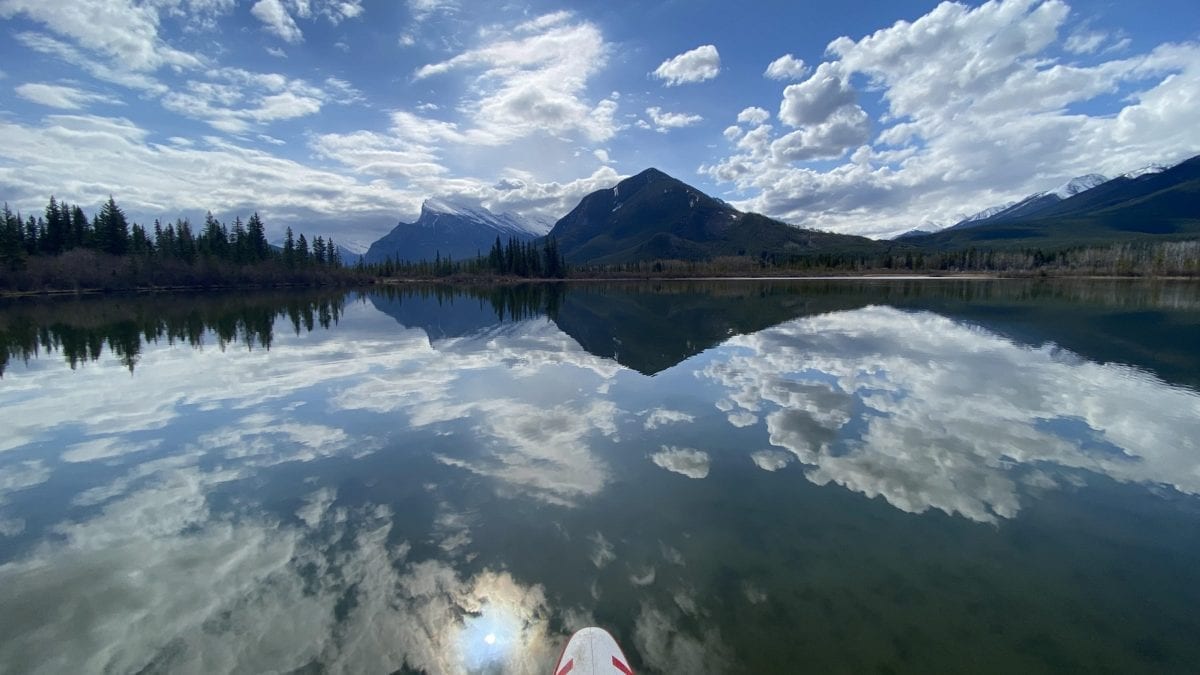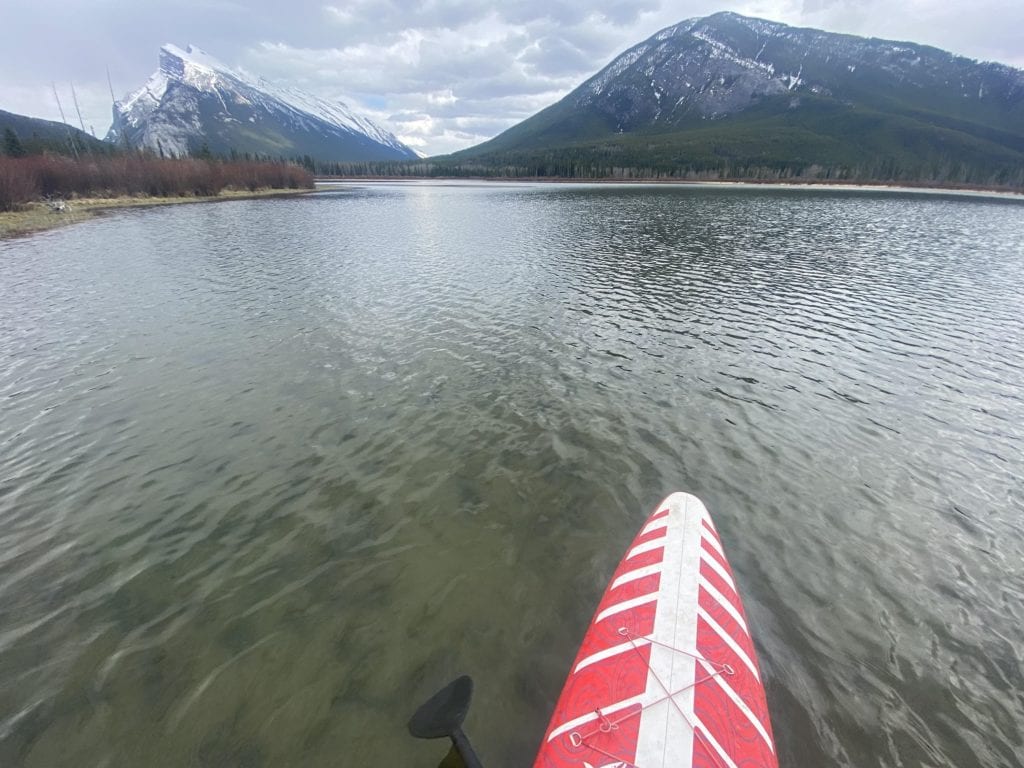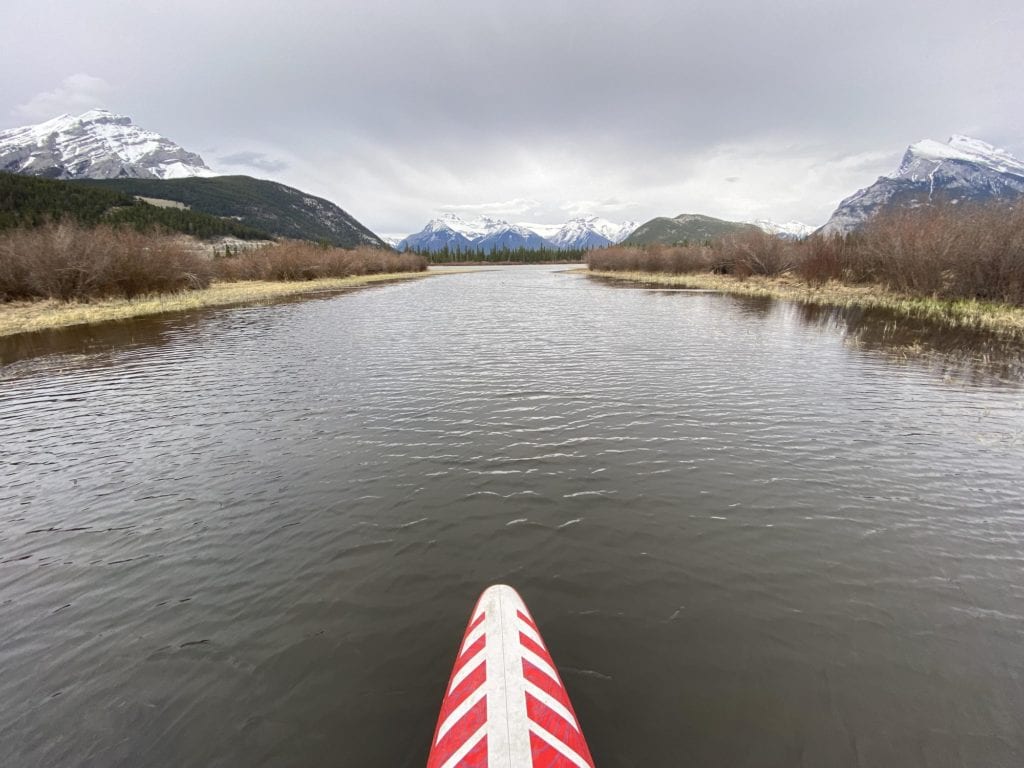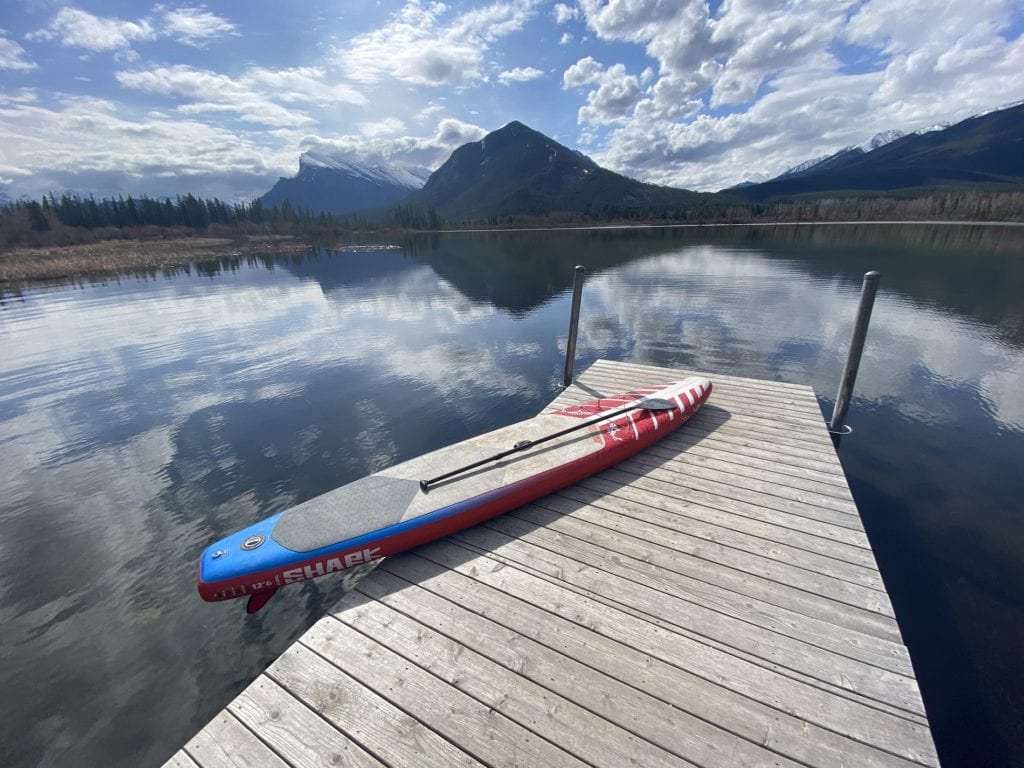Adventures With B: Paddle Boarding Vermilion Lakes in Banff
The three small lakes at the base of Mount Norquay are a popular destination for photographers and paddlers. There's even a hot spring
 Photo by: Brandon Pullan on the third lake
Photo by: Brandon Pullan on the third lake
There are a lot of small lakes in Banff and Jasper National Parks, but few are as popular as the Vermilion Lakes on the western edge of the town of Banff. They’re some of the must-paddle lakes in the Bow Valley, and are famous for photographers looking to catch a reflection of Mount Rundle.
Three shallow lakes sit north of the Bow River at the foot of Mount Norquay between the Trans-Canada Highway and the Canadian Pacific Railway tracks. The lakes are numbered from the east to west as one, two and three. The third lake even has a hot spring, but its exact location is tricky to come by.
There are over a dozen bird species, from herons and bald eagles to red wing blackbirds and sandpipers, and you can often see elk grazing in the surrounding meadows. There’s archaeological evidence that shows that people have been in the area for at least 10,800 years. The site was excavated by Parks Canada’s Daryl Fedje, who found remains of campsites and obsidian tools. Another lake by the name of Vermilion in Minnesota got its name from a translation of the Ojibwa word Onamuni, which means “lake of the sunset glow.” Vermilion is a Latin word for a colour ranging from yellow to red.
The lakes are easy to get to from the Norquay exit to Banff, you just take the first turn south of the highway heading west. The road is a few kilometres and there are parking spots along the shoulders near docks at each of the lakes.
The First Lake
The second-biggest lake is the most popular, likely because it’s the closest to town and to the hiking trail called Fern Loop. You can park in a small secondary road and walk your paddle board to the dock. From there, you can paddle to the far shorelines to watch bald eagles nesting in the spring. It’s a shallow lake, and it offers amazing views of Rundle at all times of day.

The Second Lake
The biggest of the three lakes has a number of channels that deviate from the main body of water. They’re full of birds and beavers, but are often too weedy by mid-summer to paddle. If you paddle to the most southern end, then you enter into a bay feature where you can’t hear the highway as much. Of the three lakes, this one will get the most hard-to-paddle-into waves in the afternoon when the wind picks up.

The Third Lake
The last lake before the road ends and become the Banff Legacy Trail, popular with cyclists, is the smallest, but offers the best views of Norquay’s slabby west face and of Mount Edith’s first peak. In spring, you can watch spin drift blow from the peaks leading to Sunshine ski resort, as you search out the hard-to-find hot spring. This is the deepest of the lakes, with a depth of around three metres straight out from the dock.

Other Adventures
Hiking Mount Harvey North of Vancouver
Animikii-wajiw “Mount McKay” in Thunder Bay
Hike, SUP and Fishing on Boom Lake
Hermit Meadows in Rogers Pass
Northwestern Ontario Paddle and Fish
Paddleboarding Historic Toronto-area River
Musky Fishing in Northwestern Ontario
Hiking the Lion’s Head Loop in Ontario
Ice Skating on Lake Louise
About Adventures with B: My late friend Anna Smith, who lost her life Himalayan climbing, once said to me after an epic we had in Chamonix, where we got away unscathed: “Adventures with B are messy and unplanned but always fun.” This column will focus on skiing, hiking, paddling, fishing and other adventures. A new alpine climb in 2020 was named in Anna’s honour, read about it here.


